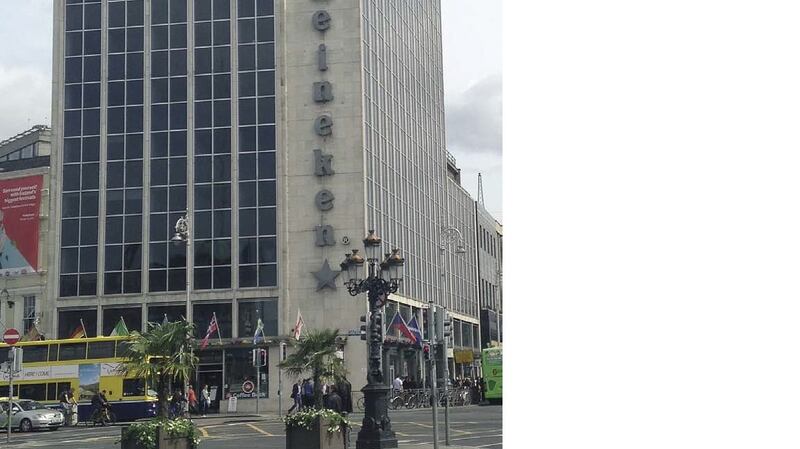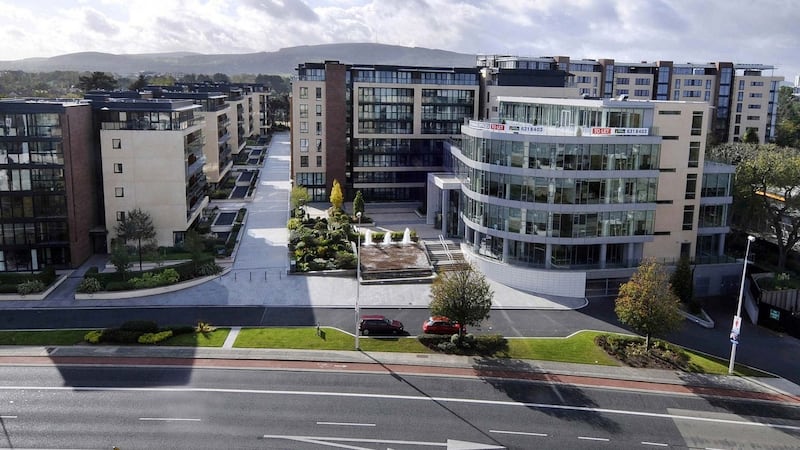The recent steep rise in Dublin city centre office rents and the dramatic drop in the vacancy rate in certain central locations has lead to an increase in the amount of penthouse space under construction or planned.
"This certainly appears to be a growing trend," says Enda Moore, a director with Hooke & MacDonald. "It is most prevalent in the prime office areas, where the rents that can be achieved from penthouse space make it viable to incur the capital expenditure required to build/refurbish the additional space."
Jim O'Reilly, a director at Knight Frank, says growth in penthouse office space is likely to continue as "with effectively a 'free site' on top of a building, adding floors offers owners the opportunity to add value".


Recent examples of new penthouse office space include at a block adjoining the train line on Grand Canal Quay; the Irish Life-owned Hambleden House on Lower Pembroke Street; Kevin O'Malley House on Earlsfort Terrace; and developer Chris Jones has added a floor to the Sam Stephenson-designed "The One Building" on Grand Canal Street. Iput is also seeking planning permission to refurbish set-back and mansard floors at 17/18 Dawson Street and has approval for an extra floor on a building in the Earlsfort Centre.
Lucrative option
While the trend to add penthouse office space is “not especially strong”, according to
Andrew Cunningham
, head of offices at Savills Ireland, “the financials involved make office penthouses lucrative currently so they will likely be done by owners refurbishing buildings, and penthouses are natural parts of any new build design”.
Mr Cunningham says city centre penthouse office space typically has an end value of between €800 and €1,200 per square foot versus a build cost of between €300 and €350 per square foot. “Penthouse office space in prime central business district locations also attracts premium rents – typically €55-plus per square foot. But you also need spare car-parking spaces to attract premium rents – executives who work in penthouses need their parking spaces.”
Many agents point to financial SMEs, IT and professional services companies as being the main drivers of demand for penthouse space. “These companies like the fact that penthouse space tends to be finished to a premium standard, offers excellent levels of natural light and is often set back with balconies. Penthouses also portray a degree of exclusivity, which reflects on the profile of the end-user,” says Jim O’Reilly.
Cunningham says the principal factors that make penthouse-level office space so attractive to tenants are the view (“waterfront in particular”) and terrace space (“with exclusive use that allows smokers!”)
Moore agrees: "We previously let the penthouse level in the Grange offices on the Stillorgan Road to Samsung Electronics, who were particularly attracted by the excellent views and external terraced areas that existed."
However, James Nugent of Lisney says there's no one type of company that specifically looks for penthouse space.
“I believe occupiers like these floors because of the excellent natural light and great views,” he says. “We’ve great space to let in O’Connell Bridge House overlooking O’Connell Bridge – the top two floors are seeking a rent of €42 per sq ft.”
Another factor behind the growth of penthouse space is its relative ease of construction. Modern penthouses tend to be light-weight structures that do not have to carry load above. However, the building’s existing frame has to be checked for load-bearing capacity while the services and lift core/stairs needs to be extended upwards.
Roderick Nowlan of Bannon says "another significantly beneficial feature" is that they can provide modern floor-to-ceiling heights – and floor and ceiling void servicing – in buildings where the lower floors are less attractive with more dated floors-to-ceiling heights and limited servicing capacity.
“Penthouses can also be built when occupiers are in the building, but the construction and management of the process needs to be carefully considered to minimise disruption and ensure the continued operation of the building,” says Jim O’Reilly. “Where vacant possession is available, the process is more straight-forward.”
Part of streetscape
In general, set-back penthouse levels are often easier to get planning permission for, although this will depend on the height and nature of adjoining buildings and factors like the streetscape. “Penthouses set precedents on parapet levels so planners are sensitive to them, particularly in conservation areas in the core CBD,” says Cunningham. “Planners are also conscious of plant above the penthouse and often now seek plant to be at the same level as the penthouse.”
Given that lots of office buildings in Dublin have recently changed ownership, new owners are looking at ways to enhance value. There is also plenty of dated office stock that requires investment to bring it up to modern standards. So, when new owners are carrying out refurbishment works, it makes sense to add floors and increase overall building size.












